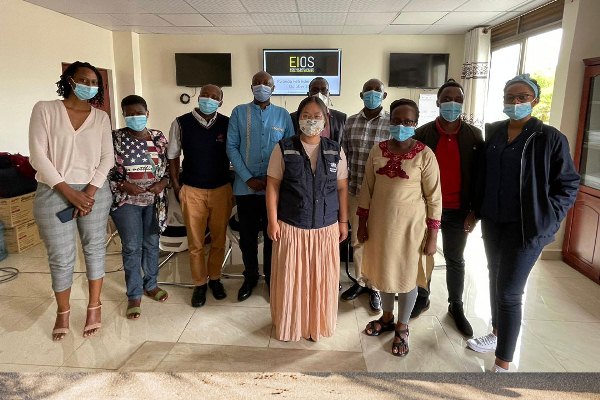
The Rwanda Biomedical Centre with the technical support from WHO/Afro has started using the Epidemic Intelligence Open Source, a web single source platform that helps to identify unexpected and unusual information using new technologies.
The EIOS initiative brings together new and existing to a single collaborative web based platform which screen a hundred thousand open sources every day. It allows filtering on crucial content and information that can be shared across network to respond rapidly and effectively to it.
EIOS was launched by World Health Organization after realizing that there are diseases and epidemics that erupt and go unreported in some countries only to be made public aware through media outlets and this is the reason why the world needs to respond quickly to the threats and diseases that are spread faster and further ever than before.
“The EIOS gives new opportunities for public health, such as an application for natural language processing, and artificial intelligence, interactive detection and analysis, the real time monitoring of stories” WHO has informed.
In his opening remark during a three-day refresher training kick-off of 10 employees working within Public Health Surveillance and Emergency Preparedness and Response Division/RBC Dr Edson Rwagasore encouraged the trainees to maximize the opportunities by the EIOS (Epidemic Intelligence Open Source) in terms of detection, analysis and response.
“The EIOS is an added value to our usual method of disease surveillance, emergency preparedness and response on daily basis. Some of these already existent methods are EIDSR (Eletronic Integrated Disease Surveillance and Response) and ECEBS (electronic Community Event Based Surveillance).”
In the same context, Mrs. Uwamahoro Sandrine (add her title) highlighted that EIOS will facilitate the implementation of disease control and management policies in a bid to smoothly enable the timely exchange of information from village level and to be able to plan a tailored response.
She went on saying “As a person in charge of Disease monitoring, I am going to start making use of EIOS to check on publication on Rwanda, our region and even overseas. This will enable me to spot alerts and signals in time and to make the immediate follow-ups”
On the other hand, Mr Habarurema Gaspard, an employee of Rwanda Health communication Center lauded the EIOS as it will be helpful to him in terms of both the information verification between factual, unfounded news and misinformation that hover over different diseases and the sifting information from all over the world.
Mrs. Theresa Lee, an expert from WHO explained the usefulness of EIOS to a country that “it brings together new and existing initiatives, networks and systems to create a unified all-hazards, One Health approach to early detection, verification, assessment and communication of public health threats using publicly available information”.
She added that EIOS saves lives through early detection of threats and subsequent intervention towards its ultimate goal when creating the EIOS platform. “It’s one way to minimize the impact of and to avert future crises”. She pointed out
So far EIOS is functional in Rwanda and other countries such as Senegal, Cameroun, Sierra Leone Uganda, Ethiopia and South Africa respectively. (End).
